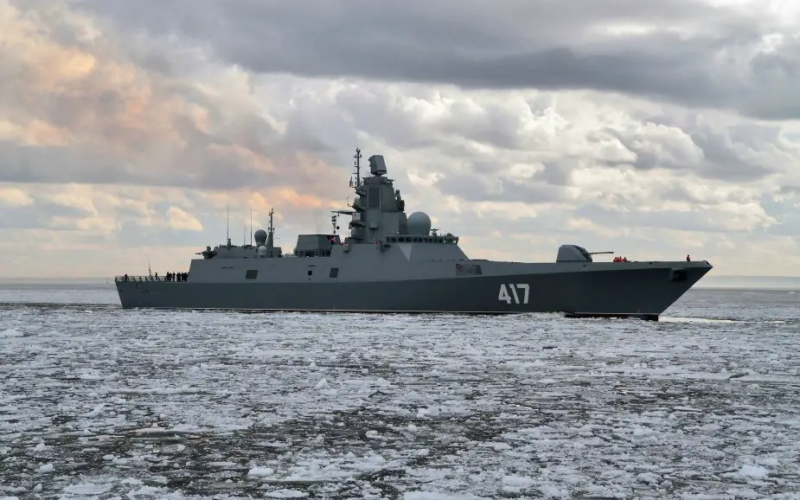Russian naval forces have conducted missile drills in the Atlantic Ocean as part of their journey to Cuba, the Russian Ministry of Defence announced on Tuesday. The exercises involved the frigate Admiral Gorshkov and the nuclear-powered submarine Kazan, both integral to a fleet of four vessels expected to arrive in Havana on Wednesday.
Details of the Missile Drills
The drills featured high-precision missile launches at mock enemy targets over a range exceeding 600 kilometers (370 miles). The Admiral Gorshkov also engaged in air defense training exercises, preparing to repel potential air attacks. According to the Russian Ministry of Defence, these drills are part of routine naval operations.
The Admiral Gorshkov is armed with Zircon hypersonic missiles, which are designed for use against both sea and ground targets. Russian President Vladimir Putin has emphasized the Zircon missile’s capabilities, noting its speed—up to nine times the speed of sound—and its range of more than 1,000 kilometers (620 miles), positioning it as a formidable addition to Russia’s naval arsenal.
Diplomatic and Strategic Context
The visit to Cuba underscores the longstanding and friendly relations between Russia and Cuba. The Cuban Foreign Ministry confirmed that the Russian vessels, which include two support ships alongside the Admiral Gorshkov and the Kazan, are scheduled to remain in Havana from Wednesday through June 17. Cuban officials have assured that the ships do not carry nuclear weapons and pose no threat to the region.
The trip occurs amid heightened global tensions, particularly between Russia and the United States, fueled by the ongoing conflict in Ukraine. The United States is closely monitoring the Russian naval exercises, with a US official indicating that while the drills are not perceived as a direct threat, the US Navy will observe them. This deployment is seen as Russia’s demonstration of its ability to project power globally despite its engagements in Ukraine.
Historical and Regional Implications
The presence of Russian warships in the Caribbean is not unprecedented. However, this visit follows recent remarks by President Putin suggesting that Moscow could supply adversaries of Western nations with similar weapons if Western allies continue to provide Kyiv with advanced weaponry capable of targeting Russia.
Cuba has framed the visit as part of standard naval protocols with friendly nations, emphasizing that such interactions have historical precedents. The visit aims to reinforce the strong bilateral ties between Cuba and Russia, reflecting a continued partnership in a period marked by geopolitical friction.
Monitoring and Future Outlook
As the Russian vessels approach Havana, their movements will be watched closely by international observers. The exercises and subsequent visit are part of a broader strategic message from Russia about its naval capabilities and its intent to maintain a visible presence on the global stage. The outcomes of this visit may influence future interactions and diplomatic strategies between Russia, the United States, and other global players.
The Russian fleet’s scheduled activities in Havana will provide further insight into Russia’s military strategies and its approach to international naval diplomacy during a period of significant geopolitical tension.








